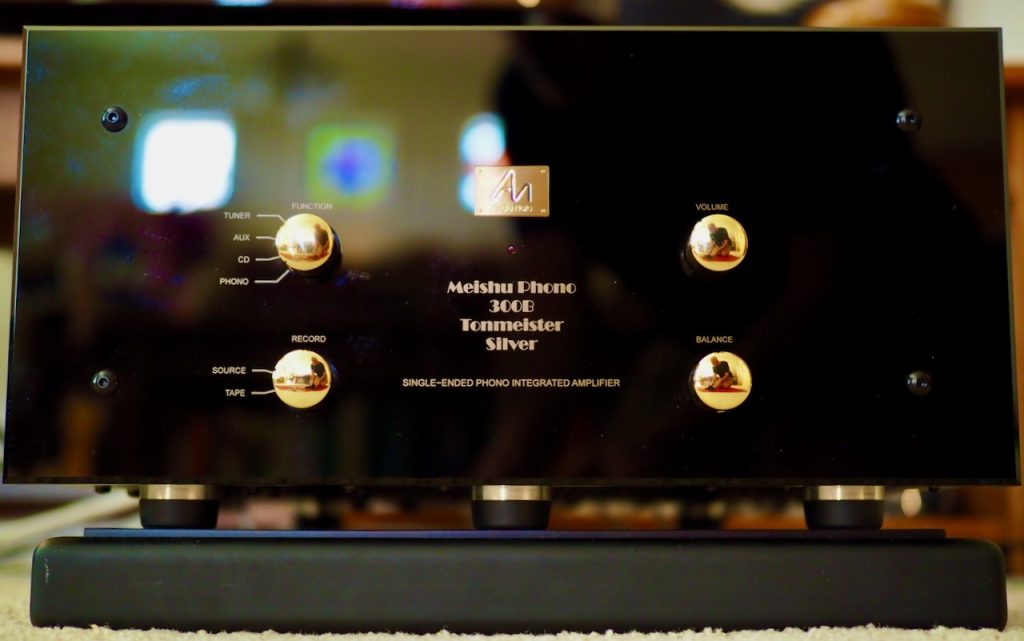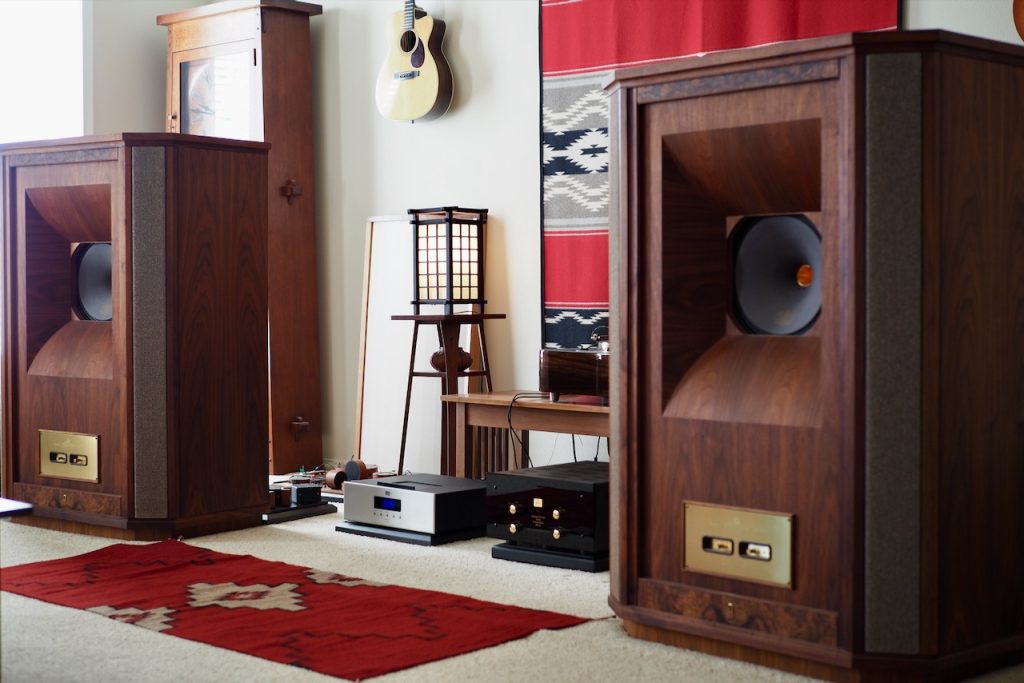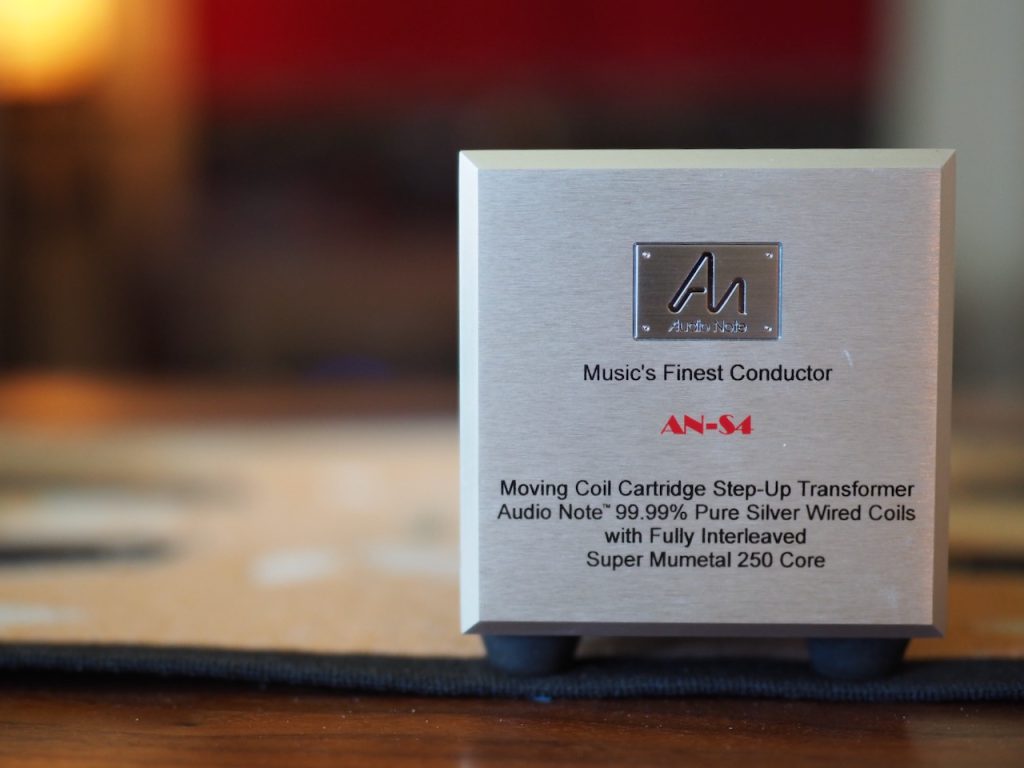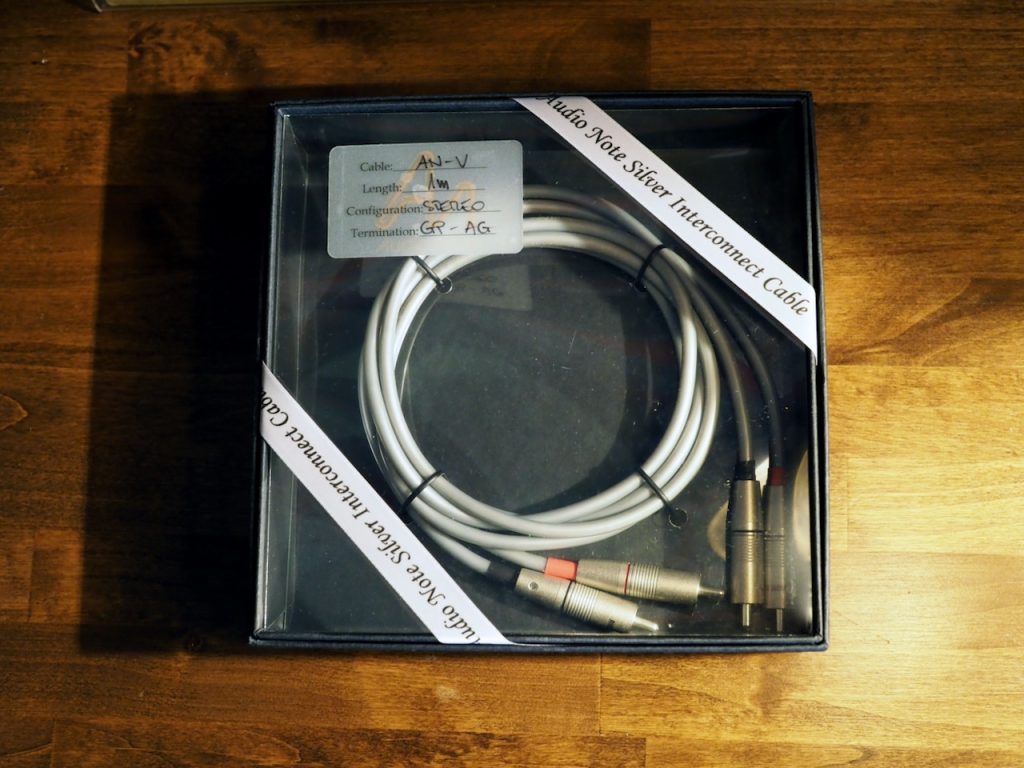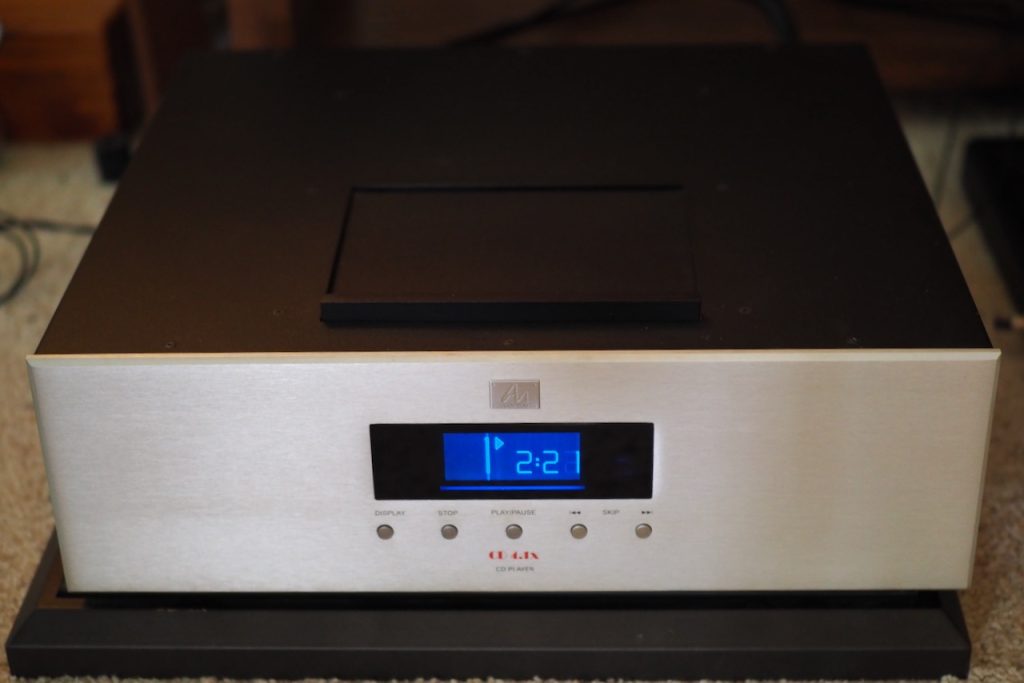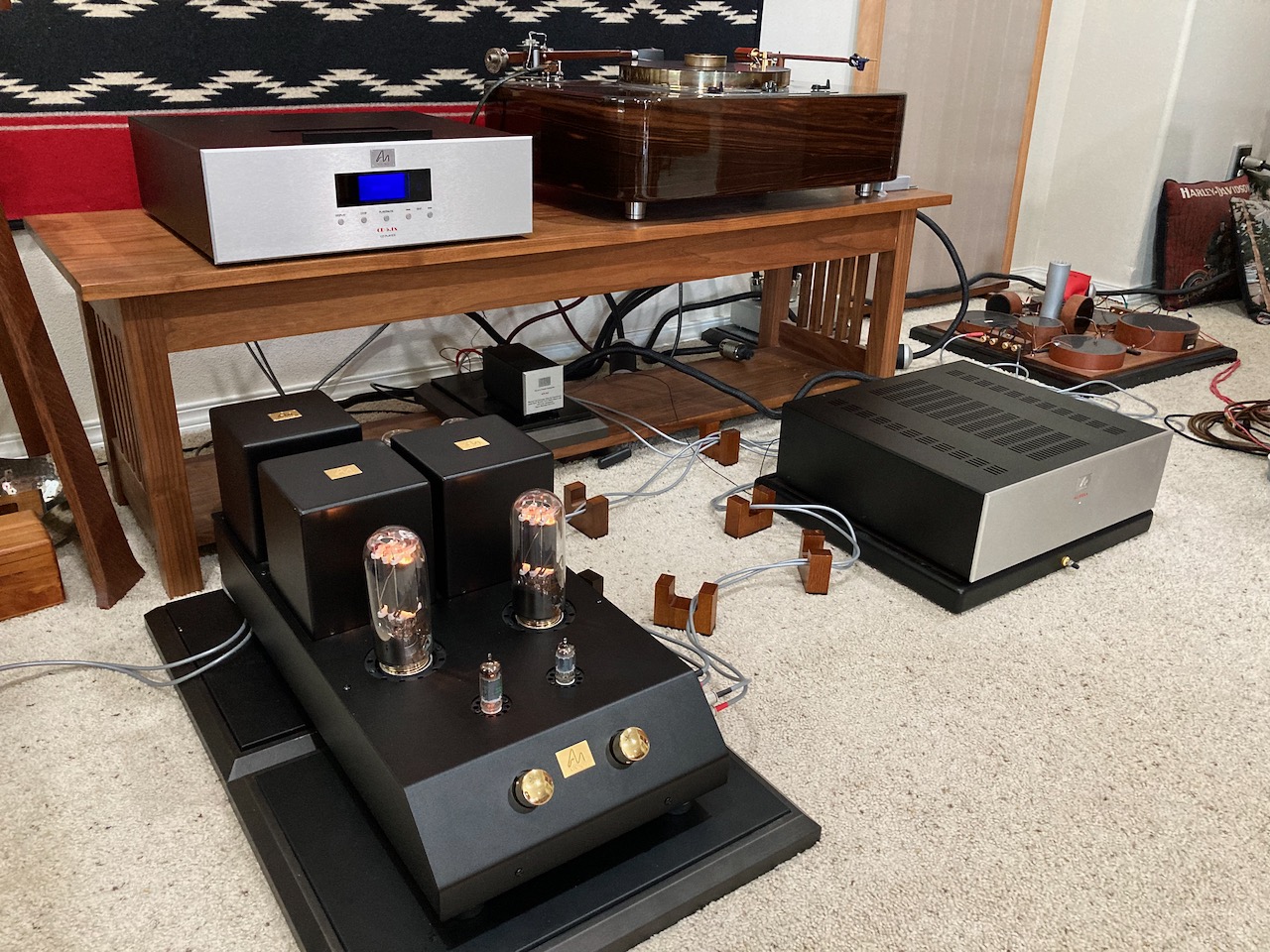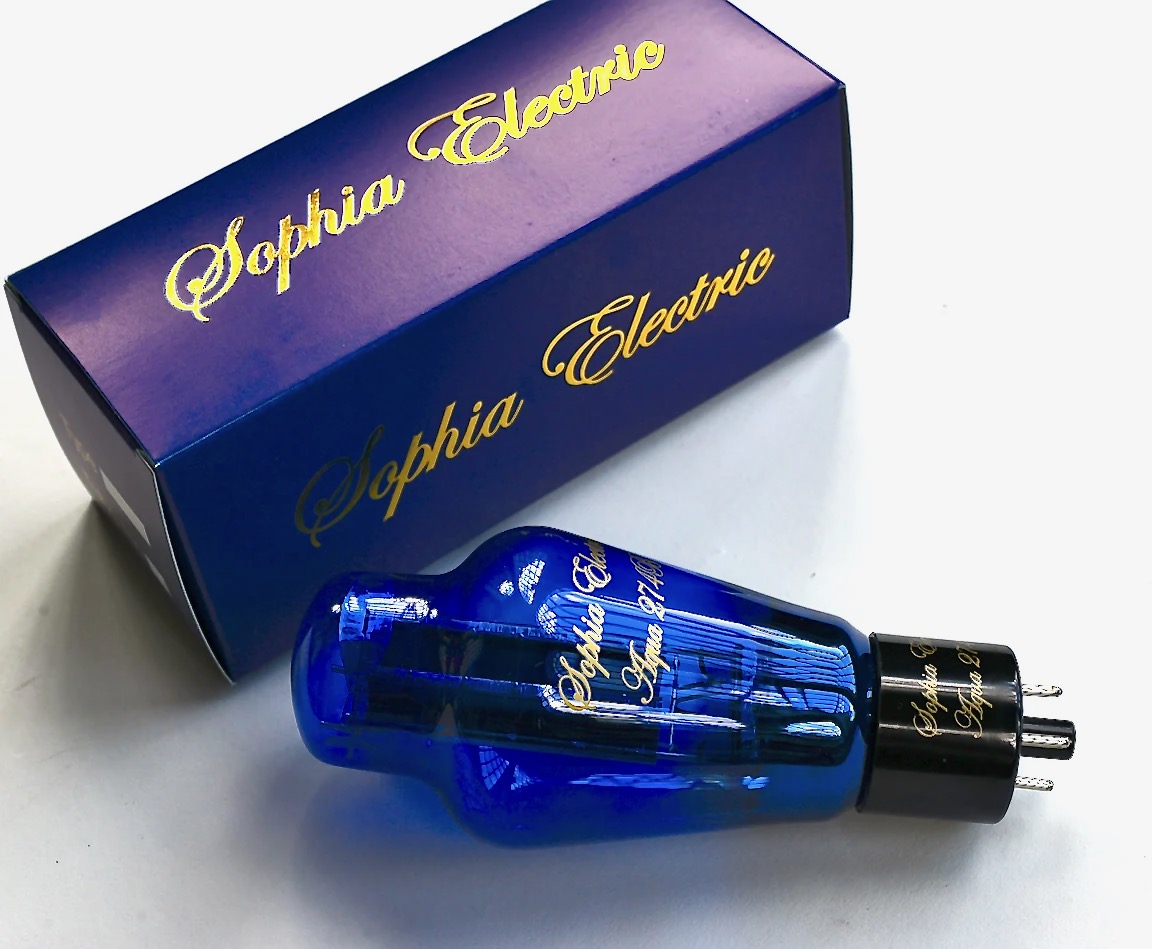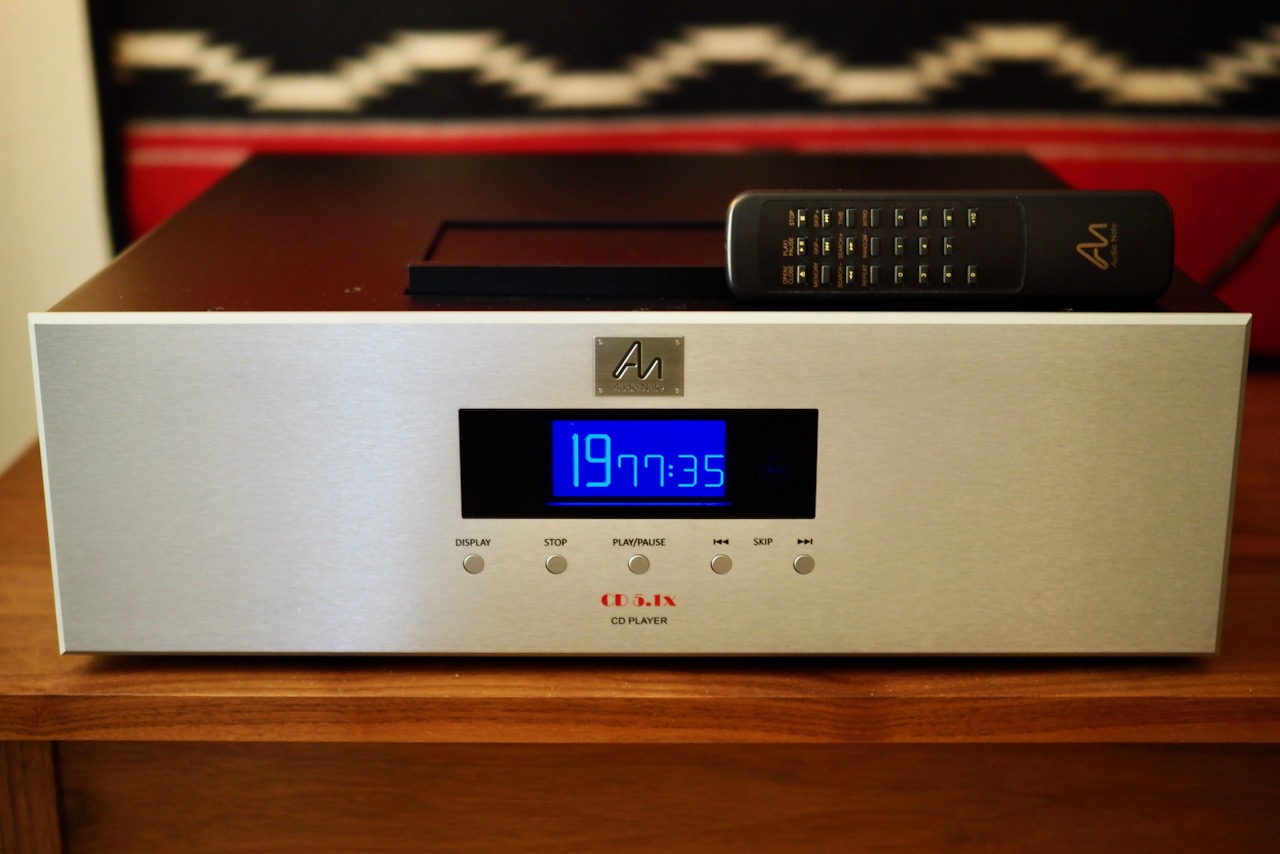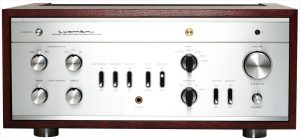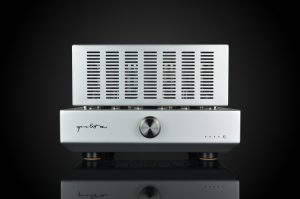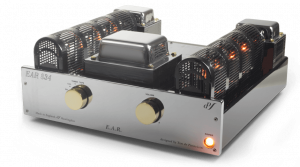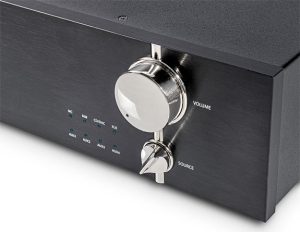Let's do a 'walk-around' of the Meishu.
Starting on the left side of the front panel you see two selector knobs. The top knob is the source "Function" selector, for phono, CD, an auxiliary source, and tuner.
Just below the Function selector is the "Record" selector knob, for switching between source and tape monitoring while recording.
On the right side of the front panel there are also two selector knobs. The top knob is the volume control, and the knob below it is the balance control.
Starting on the left side of the back of the chassis you can see the power on-off switch in the upper left corner, with the fuse holder just to its right.
Just below the power switch is the IEC connector female plug for a power cord.
Going to the center of the chassis you can see six silver binding posts for the right and left channel speaker cables, with connections for ground, 4 Ohms, and 8 Ohms.
To the right—and just below—the left channel binding posts is a signal ground for the phono stage. Further below the left channel binding posts you can see a chassis ground.
To the right, and above the left channel binding posts, you can see a pair of silver "Tape-In" female RCA connectors, and just below them a pair of silver "Tape-Out" female RCA connectors.
To the far right of the chassis are four pairs of silver female RCA input connectors for a tuner input, an auxiliary input, a CD player input, and the phono stage input.
Underneath the chassis are six heavy-duty footers.
Peter Qvortrup told me to be careful of my back while unpacking and lifting the Meishu out of its shipping container, as it is a big heavy amplifier.
That's good advice, as at 29.5 kg (65 pounds), and dimensions of 220 mm / 8.7 inches height, 460 mm / 18.1 inches width, and 530 mm / 20.9 inches depth, the Meishu is a handful to lift and move around. I used proper lifting techniques, and my back did just fine.
Review System
The loudspeakers used for this article were my Tannoy Westminster Royal Special Edition loudspeakers, with custom external Duelund CAST crossovers. The West's relatively high 99dB sensitivity made them an excellent match for the Meishu's 8 watts per channel of output power.
The superb Audio Note (UK) Io I MC phono cartridge, AN-S4 step-up transformer, and AN-V silver interconnects (review HERE) served as the vinyl source, in combination with my custom CTC Garrard 301 turntable.
The equally superb Audio Note (UK) CD 4.1x Red Book CD player (review HERE) served as the digital source.
Duelund DCA16GA tinned-copper interconnect cables connected the Level Three Meishu Tonmeister to the Level Three 4.1x Red Book CD player, while Level Three AN-V silver interconnects connected the Meishu to the AN-S4 step-up transformer, and Level Four AN-SPe silver speaker cables (HERE) connected the Meishu Tonmeister to my Westminster loudspeakers.
Components were placed upon Acoustic Revive RST-38, TB-38, and RAF-48 isolation platforms.
Power cables for all the components were Acoustic Revive Absolute, which were all plugged into an Acoustic Revive RPT-6 Absolute NCF Power Distributor unit, which itself was connected to wall AC with an Acoustic Revive Absolute power cable.
My AC wall outlets consisted of the Acoustic Revive CB-1DB receptacle base plate, CFRP-1F carbon fiber outlet plate, and an Acoustic Revive modified Oyaide R-1 receptacle.




